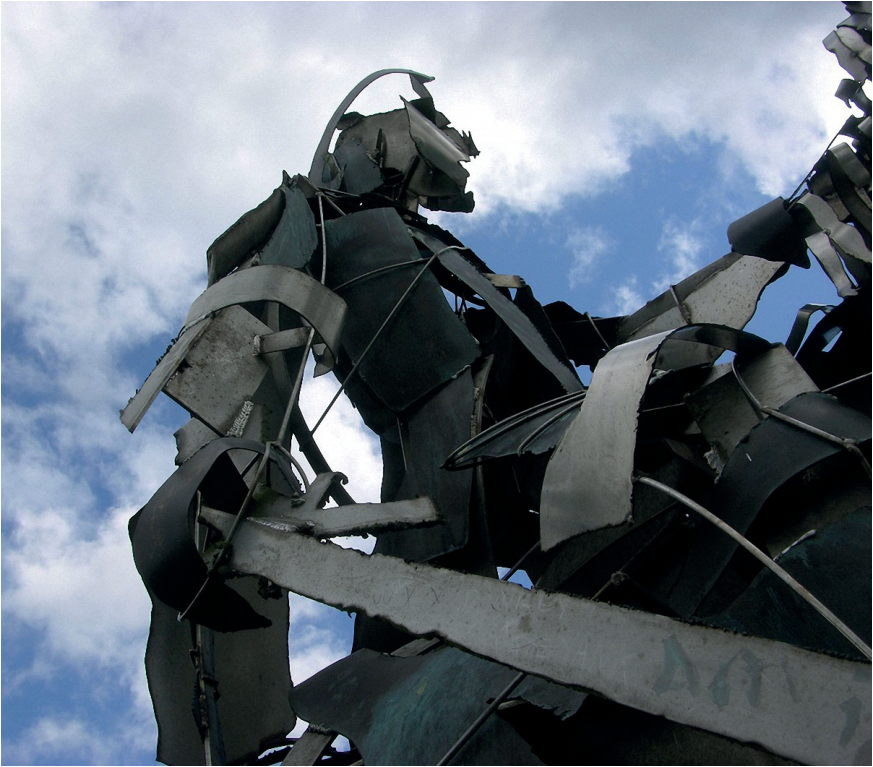Red Hugh O’Donnell, Tirconnell’s missing lord— but for how long?
Published in Issue 4 (July/August 2020), News, Volume 28BY JAMES O’NEILL
On 22 May 2020, archaeologists in Valladolid, Spain, reported the discovery of bones at an excavation to find the last resting place of Red Hugh O’Donnell, lord of Tirconnell. The news provoked significant interest from both the national and social media, with much tweeting and comment on the possible rediscovery of one of Ireland’s lost heroes. But just who was O’Donnell and how did he find his way to a missing grave in Spain?

Above: The Gaelic Chieftain by Maurice Harron, erected near the site of the Battle of Curlew Pass (1599), where Red Hugh held overall command. (Nick Maxwell)
Hugh was born in 1572, the son of Sir Hugh O’Donnell and Finola McDonnell. He belonged to one of the most powerful septs in Ulster, but things took a turn for the worse when he had the temerity to become betrothed to Rose O’Neill, the daughter of Hugh, earl of Tyrone. In September 1587, aged just fifteen, Red Hugh was kidnapped on the orders of Lord Deputy Perrot and carried off to imprisonment in Dublin Castle, where he languished for over three years in a cell until his escape was engineered by his prospective fatherin-law. O’Donnell almost died in the bitter cold as he fled over the snowcovered Wicklow Mountains, losing both of his big toes to frostbite. Aided by the O’Byrnes, however, he was brought north, and his formidable mother, Finola, ensured that he was inaugurated as lord of Tirconnell in April 1592.
The English authorities in Dublin were right to be wary of an O’Donnell–O’Neill alliance. Within a year war was stirring in the north, as English corruption and encroachment into Ulster threatened the patrimonies of the Irish lords. Discontent burst into open war in 1593, as Hugh Maguire (also a sonin-law of O’Neill) and O’Donnell rose in rebellion against the Crown. Aided by Irish bishops, O’Donnell and O’Neill were in contact with Philip II of Spain, who promised money, military aid and a Spanish army to extinguish English power in Ireland. The confederation of Irish lords chalked up a string of victories against the Crown forces, as English officers struggled to cope with the sophisticated Irish strategy and modern troops. In August 1598, O’Neill and O’Donnell delivered a shattering blow by routing the English field army at the Battle of the Yellow Ford. A year later the English suffered another defeat at the hands of O’Donnell at the Battle of Curlew Pass. The Irish confederates controlled much of Ireland by the start of 1600, with Crown authority limited to the towns and a few fortified outposts, but the Spanish landing was still nowhere in sight. The tide slowly turned as a large garrison was established at Derry on the River Foyle and O’Donnell’s subordinates began to defect to the Crown. Despite his best efforts, English forces led by Irish guides pushed further into Tirconnell, and in August 1601 Red Hugh’s capital at Donegal town fell. The Irish confederates were pushed back on all fronts, and when the long-awaited Spanish force arrived at Kinsale it was besieged by Lord Deputy Mountjoy. O’Donnell and O’Neill marched to their aid and here O’Donnell showed his flair for manoeuvre, marching his men over the frozen Slieve Felim Mountains (Co. Tipperary) to sidestep English troops sent to block his advance.
All this was to little avail. The Irish were routed on Christmas Eve 1601 at the Battle of Kinsale. Irish military power was broken, and three days later O’Donnell sailed for Spain to lobby Philip III for further aid. Travelling to Zamora, he was met favourably, and the Spanish king agreed to send a new, larger force. Red Hugh succumbed to a fever on 10 September 1602, however, and with him died the hopes of another Spanish landing. He was buried with honours in the monastery of St Francis in Valladolid.
Red Hugh’s resting place in the ‘Chapel of Wonders’ was destroyed in 1836, but news from the excavation reported the discovery of fifteen skeletons. Is Red Hugh one of them, and how can we tell? The big toes will be missing, but these can be absent from skeletons owing to natural decay. Perhaps O’Donnell’s surgeon left tool marks on the metatarsals when Hugh’s frostbitten toes were amputated? Strontium isotope analysis may be able to identify which part of Europe a person grew up in, or maybe DNA could be used. Even if archaeologists can positively identify the remains of O’Donnell, what should become of them? There have already been voices calling for repatriation, and I have even heard some mention a State funeral. Where would he be buried? No doubt rival claims will emerge. Luckily, we don’t have to guess at Red Hugh’s final wishes, as he recorded them before his death. In his will and final testament, O’Donnell was clear—he asked to be interred at Valladolid:
‘I commend my body to the clay of which it was formed, and I wish and order that it be interred in the church of the monastery of the Lord Saint Francis in Valladolid … [at a] particular spot which the King our Lord shall appoint. And may his will be done in everything.’
I would say that that is fairly unambiguous.
James O’Neill is the author of The Nine Years War, 1593–1603 (Four Courts Press, 2017).
















